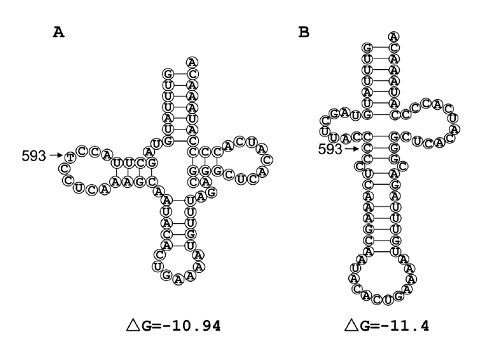Leber’s hereditary optic neuropathy (LHON) affects predominantly young (20-30 years old) adult males. Itis a mitochondrially inherited (mother to all offspring) degeneration of retinal ganglion cells (RGCs) and their axons that leads to an acute or sub-acute loss of central vision. Although the mechanism of LHON is relatively clear that the three pathogenic mitochondrial point mutations (MT-ND4gene, m.11778 G>A; MT-ND1 gene, 3460 G>A; and MT-ND6 gene 14484 T>C) are the sources of it. But, when comes to the clinical expression and the direct causes of LHON, it is another issue. Not all the mutation carriers express the symptoms; neither all the patients with the symptoms have the mutations.
As the incomplete penetrance makes it difficult to elucidate the relationship of pay and gain in LHON expression, in a recent study, researches dug deeper of the genetic background of LHON in Chinese population (PLoS ONE 6(10): e26511. doi:10.1371/journal.pone.0026511). In their story, the m.593T>C in the mitochondrially encoded tRNA phenylalanine (MT-TF) gene might have given the pathogenic expression a little nudge in the Chinese LHON families.
In this study, to determine the potential role of m.593T>C in LHON, the frequency of this variant in 479 LHON patients with m.11778G>A, 843 patients with clinical features of LHON but without the three known primary mutations, and 2374 Han Chinese from the general populations has been compared. The results show that the frequency of m.593T>C was higher in LHON patients (14/479) than in suspected LHON subjects (12/843) or in general controls (49/2374). The overall penetrance of LHON in families with both m.11778G>A and m.593T>C (44.6%) was also substantially higher than that of families with only m.11778G>A (32.9%).
Moreover, the mitochondrial tRNAs played an important role in mtDNA translation because the nuclear tRNA could not be transported from cytoplasm into mitochondria in human. The mutations occurred in mt-tRNAs can change the secondary structure and alter the tertiary structure, further affect the translation of mtDNA encoded genes. So, the secondary structure of MT-TF gene harboring the m.593T>C has also been evaluated and the result was positive. Despite that the position 593 was not evolutionarily conserved and had a modest mutation rate in human mtDNA, it altered the secondary structure of the MT-TF gene as demonstrated by an in vitro transcribed assay.
In summary, the lines of evidence in this study provide new clues of decoding the eczema of LHON expression by suggesting a modest synergistic effect of variant m.593T>C on the LHON causing mutation m.11778G>A.
Corresponding authors:
YAO Yong-Gang (E-mail: ygyaozh@gmail.com)
Kunming Institute of Zoology, the CAS
ZHANG Qing-Jiong (E-mail: qingjiongzhang@yahoo.com)
Zhongshan Ophthalmic Center

Predicted secondary structure of the wild type human MT-TFgene (A) and the mutant harboring m.593T>C (B). Position 593 was marked by an arrow. DG means the free energy. (Figure by KIZ)
